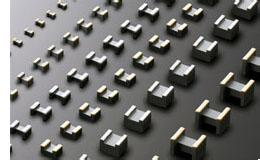
Advanced Chip Inductor Technology Expects to Overwrite Circuit Design
Scientists at the University of California, Berkeley, have said that they have found a new method that can advance the development of on-chip inductor technology, which will help create a new generation of micro RF (radio frequency) electronics. Wireless communication system design.
Researchers at the University of California are exploring in depth the latest developments in the synthesis of nanomaterials in nanomagnets. According to Liwei Lin, a professor of mechanical engineering at the University of California, Berkeley, researchers have discovered that magnetic nanoparticles coated with an insulating layer can reduce the size of high-frequency chip inductors while improving performance. Its high cutoff frequency provides good magnetic permeability, which reduces eddy current losses during high frequency operation."
The problem often faced by engineers is that while trying to reduce the size of the chip inductors, they must maintain their best inductance and performance. Liwei Lin said that these difficulties mainly come from the restrictions caused by "basic science and engineering practice constraints."
The wafer inductor technology does not evolve like transistor technology. Transistor technology has been following Moore's Law for the past 40 years. Inductors are considered to be passive components on the circuit and are classified in the field of “surpassing Moore's Lawâ€. Therefore, non-digitalized functions such as RF and MEMS that do not shrink due to Moore's Law are integrated.
The chip inductor architecture requires a larger area because of the length, number of turns, thickness, and space required between its metal traces to achieve proper inductance and performance. However, for a larger area, inductance loss may occur due to a parasitic effect between the rotating coil and the semiconductor substrate.
Therefore, inductors must be added with magnetic materials when they are miniaturized, but this also brings other technical limitations, such as process solutions, compatibility with standard processes, and material stability, Liwei Lin said. There are some restrictions on the permeability and frequency response."
The new inductor fabrication technology uses insulated nanocomposite magnetic materials as fill material to reduce the size of the chip inductors and increase the inductance by up to 80%, thereby reducing the wafer inductor by at least 50%. In addition, Liwei Lin emphasized that it also has the potential to extend the operating frequency range from GHz to 10 GHz.
He predicted that these advances in inductor technology are expected to be implemented in the wafer process in the next 3-5 years.
Fire Emergency Signs,Weatherproof Exit Sign,Illuminated Fire Exit Signs,Battery Operated Emergency Lights
Jiangmen City Pengjiang District Qihui Lighting Electrical Appliances Co., Ltd , https://www.qihuilights.com


